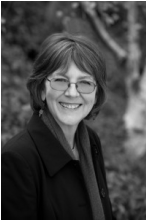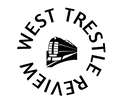 “Love leaves a trail in the scattered seed where small birds have feasted and in the smell of jasmine circling the doorway at nightfall.” ~ Marilyn McEntyre, opening lines from, “Where Love Has Been” The Light at the Edge (Fithian Press, 2006) Marilyn McEntyre is a poet attentive to what can be seen in the light. In addition to her poetry books, The Light at the Edge and Where Icarus Falls (1998), she has three collections of ekphrastic poems, published by Eerdmans and dedicated to selected artworks of the Dutch painters Vermeer, Rembrandt, and Van Gogh respectively: In Quiet Light (2000), Drawn to the Light (2003), and The Color of Light (2007). Paired with beautiful, full-color reproductions of the originals, her verses draw the reader’s vision gently into the worlds of poetry and paint, rendering the possibilities of interpretation in luminescent words. When I taught creative writing at Colorado Christian University, I liked to use The Color of Light in my poetry unit, not only because Van Gogh’s artwork reveals the immeasurable value of the artist’s calling and perseverance despite his lack of worldly success with love or money, but also because the collection shows many strategies a poet can use when writing ekphrastically, such as: - Describing a painting with attention to contrasting colors (“Self-Portrait with Gray Felt Hat”) - Describing a painting using a vivid list of what’s depicted in it so that the extraordinary significance of the ordinary becomes more apparent (“Van Gogh’s Bedroom”) - Imagining the life of a person portrayed in a portrait (“Portrait of Madam Trubac”) - Incorporating a biblical or literary allusion (“The Sower”) - Using the description of the painting to raise a philosophical question at the poem’s conclusion (“Landscape with House and Ploughman”) - Imagining what would happen if things depicted in the painting began to move closer or interact differently (“The Olive Trees”) - Imagining the sound of the music playing in the scene of the painting (“The Starry Night”) - Imagining the relationship between two people portrayed in a painting (“Couple Walking between Rows of Trees”) - Inverting a traditional interpretation of a painting (“Wheatfield with Crows”). “Wheatfield with Crows” is often considered Van Gogh’s last painting and associated with his suicide, but McEntyre sees the light in the darkness, for as she says at the conclusion of her poem: “the sun / that poured itself, day / after day into these stalks / shines. It shines.” Thus the poet turns from the negative toward photons of the positive. McEntyre’s poetry emerges from a life of faith, thought, and spiritual practice, which she has lived not only as a poet and teacher of poetry, but as a minister and a healer -- even as an angel of grace. She is particularly interested in a field known as the “medical humanities,” and she has worked with many groups of people to help them integrate creative expression, especially poetry, with the healing process. Her books A Faithful Farewell: Living Your Last Chapter with Love (Eerdmans, 2015), Patient Poets: Living Illness from the Inside Out (UC Medical Humanities Press, 2013), and Teaching Literature and Medicine (MLA, 2000) reflect her commitment. Marilyn McEntyre is a friend and colleague, someone I admire, and I believe anyone would enjoy her beautiful work. ~ Jane Beal, PhD, poet of the week.
0 Comments
Leave a Reply. |
Powered by Women

 RSS Feed
RSS Feed